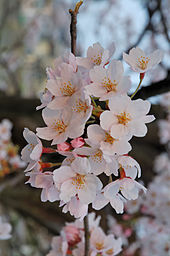Isagiyosa
Appearance
This article needs additional citations for verification. (April 2017) |

In Japanese society, particularly in historical feudal Japan, isagiyosa (潔さ, "purity") is a virtue, translated with "resolute composure" or "manliness".[1] Able to be interpreted as "grace with pride",[2] isagiyosa is the capability of accepting death with composure and equanimity.[3][4] It stands besides other central virtues such as public-spiritedness (kō no seishin), loyalty (seijitsusa), diligence (kinbensa) and steadiness (jimichisa).
Cherry blossoms, because of their ephemeral nature, are a symbol of isagiyosa in the sense of embracing the transience of the world.[5] Honda (2001) maintains that these virtues are not Japanese in particular but form a moral code common to all Asian agricultural societies.[6]
See also
[edit]References
[edit]- ^ Schreiber, Mark (21 November 2020). "Japanese media weigh in on the U.S. election". Japan Times. Retrieved 23 January 2023.
- ^ Fujimoto, Masaru (15 December 2002). "Chushingura Chushingura". Japan Times. Archived from the original on 27 March 2017.
- ^ Becker, Gerhold K., ed. (8 November 2021) [2000]. The Moral Status of Persons: Perspectives on Bioethics. Brill. p. 123. ISBN 9789004495029.
- ^ Slade, Toby (November 2009). Japanese Fashion: A Cultural History. Bloomsbury. p. 85. ISBN 9781847887481.
- ^ Richard J. Berenson, Neil deMause, The complete illustrated guidebook to Prospect Park and the Brooklyn Botanic Garden (2001), p. 121.
- ^ Honda Yoshihiko, 2001, ‘Taiwan de “Taiwanron” wa dô yomareta ka,’ Sekai 688: pp. 220-228, cited after Ulrike Wöhr, Japan’s “Return to Asia”: History, Diversity, Gender, “Images of Asia in Japanese Mass Media, Popular Culture and Literature”, Papers Presented at ICAS 2, Berlin, Germany, 9–12 August 2001ü .
